
This powerful, nuanced portrait arrives just in time celebrate the bicentennial of American abolitionist and political activist Harriet Tubman. Parts of her story are well known; born into slavery, Tubman escaped and subsequently made some 13 missions to rescue approximately 70 enslaved people, including family and friends, using the network of anti-slavery activists and safe houses known as the Underground Railroad. But the film delves deeper, illuminating her spirit and strength through exploits as a union scout and spy during the Civil War, an activist for women’s suffrage and a singular figure who defied categorization at every turn. The foremost chronicler of the Black experience working in nonfiction film today, Stanley Nelson, alongside co-director Nicole London, brings rich, deeply researched historical detail to the story of this remarkable woman.
You May Also Like

Tourists flock to the west coast of Ireland to take in the breathtaking cliffs of Moher, but the real treasure lies in the soulful, acoustic sounds wafting out of pubs and living rooms of Doolin, County Clare. The denizens of this unspoiled coastal village of tight-knit neighbors and unlocked doors revel in the passion and history of their traditional folk songs, using music as a thread through generations to create community, connection and joy.

A Sense of Justice, immerses us In a law firm in this same city. There, we can find Christine Mengus and Nohra Boukara, specialized in the rights of foreigners, supported by Audrey Scarinoff and their co-workers.. Stories from their sad, appalling or tragicomic cases alternate with their daily legal work. And as we hear snatches of consultations involving illegal entry or departure, deportation orders, the right to reside or medical assistance, we become witnesses to predictable tragedies, to the administrative or social precariousness induced by such predicaments, and to whole lives depending on court rulings.
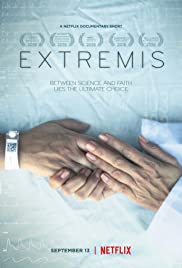
A purely observational non-fiction film that takes viewers into the ethically murky world of end-of-life decision making in a public hospital.
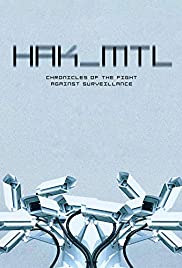
Does privacy still exist in 2019? In less than a generation, the internet has become a mass surveillance machine based on one simple mindset: If it’s free, you’re the product. Our information is captured, stored and made accessible to corporations and governments across the world. To the hacker community, Big Brother is real and only a technological battle can defeat him.

From Amos ‘n’ Andy to Nat King Cole, from Roots to The Cosby Show, black people have played many roles on primetime television. Brilliantly weaving clips from classic TV shows with commentary from TV producers, black actors and scholars, Marlon Riggs blends humor, insight, and thoughtful analysis to explore the evolution of black/white relations as reflected by America’s favorite addiction.

Walking in the forest without being able to see, coming down the stairs or going shopping when one is paralysed, falling asleep with post-traumatic stress disorder: for the protagonists of Buddy, all of this is made possible by the presence of an assistance dog at their side. Edith, 86 years old and blind since adolescence, remembers all of the dogs she has had with her, and their portraits—even if she cannot see them—cover the walls of her house.
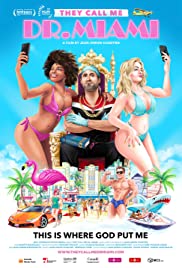
Dr. Miami (a.k.a. Michael Salzhauer) is the most famous surgeon in America. Millions of loyal followers from around the world tune in daily as he live streams graphic plastic surgery procedures on social media – all with the enthusiastic consent of his self-proclaimed “beauty warrior” patients. Celebrated for his outrageous social media persona and boasting a patient waiting list that’s two years long, his private life is quite different than one may expect. After he leaves a lively day’s work of Brazilian butt lifts, breast augmentations and choreographed snapchat videos, he’s a devoted husband, father to five children and an Orthodox Jew who observes the Sabbath.
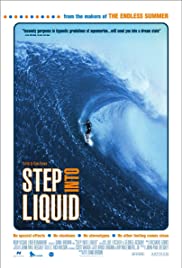
No special effects. No stuntmen. No stereotypes. No other feeling comes close. Surfers and secret spots from around the world are profiled in this documentary.

Today, few people’s clothes attract as much attention as the royal family, but this is not a modern-day paparazzi-inspired obsession. Historian Dr. Lucy Worsley, Chief Curator at Historic Royal Palaces, reveals that it has always been this way. Exploring the royal wardrobes of our kings and queens over the last four hundred years, Lucy shows this isn’t just a public fascination, but an important and powerful message from the monarchs. From Elizabeth I to the present Queen Elizabeth II, Lucy explains how the royal wardrobe’s significance goes far beyond the cut and color of the clothing. Royal fashion is, and has always been, regarded as a very personal statement to reflect their power over the reign. Most kings and queens have carefully choreographed every aspect of their wardrobe; for those who have not, there have sometimes been calamitous consequences. As much today as in the past, royal fashion is as much about politics as it is about elegant attire.

A young Polish lawyer – Joanna goes on a journey to find her grandfather’s grave and along the way discovers long forgotten WWII episode of 1500 Polish refugees, who far away from their homeland found, thanks to hospitality of Mexico and kindness of its people , safe heaven in hacienda Santa Rosa in Leon, Guanajuato.
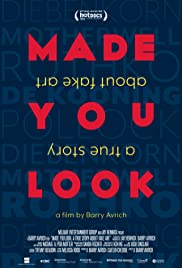
A woman walks into a New York gallery with a cache of unknown masterworks. Thus begins a story of art world greed, willfulness and a high-stakes con.

Scottish animators Will Anderson and Ainslie Henderson star in and co-direct this inventive documentary. Albeit framed as a film for Will’s mother, we too are invited to witness how Will deals with the grief of his mother’s cancer. The duo work on their animations and face the frustrations of trying to make this documentary. Whilst alone, Will turns to DOM, the animated cat that lives on his laptop screen.